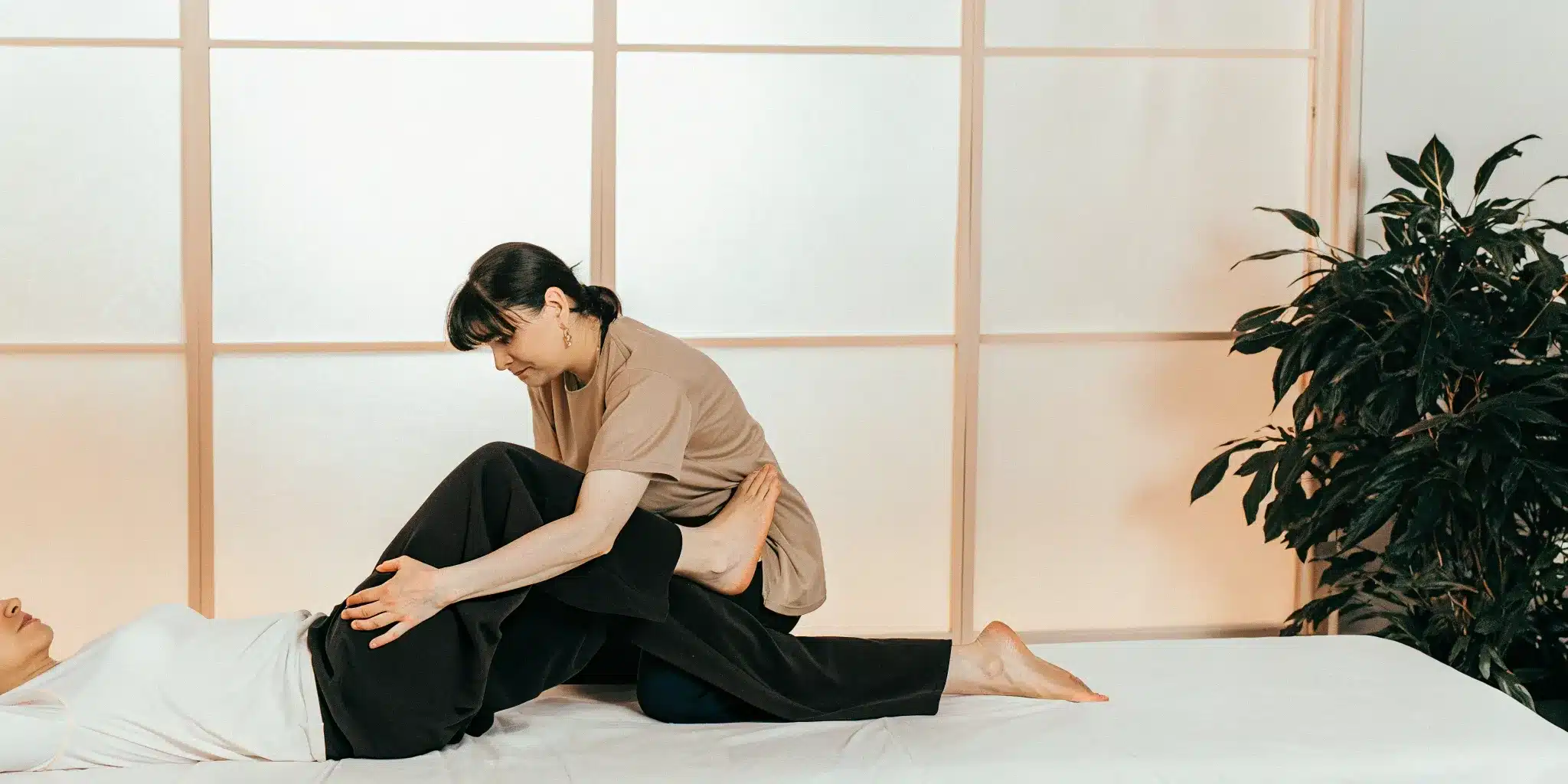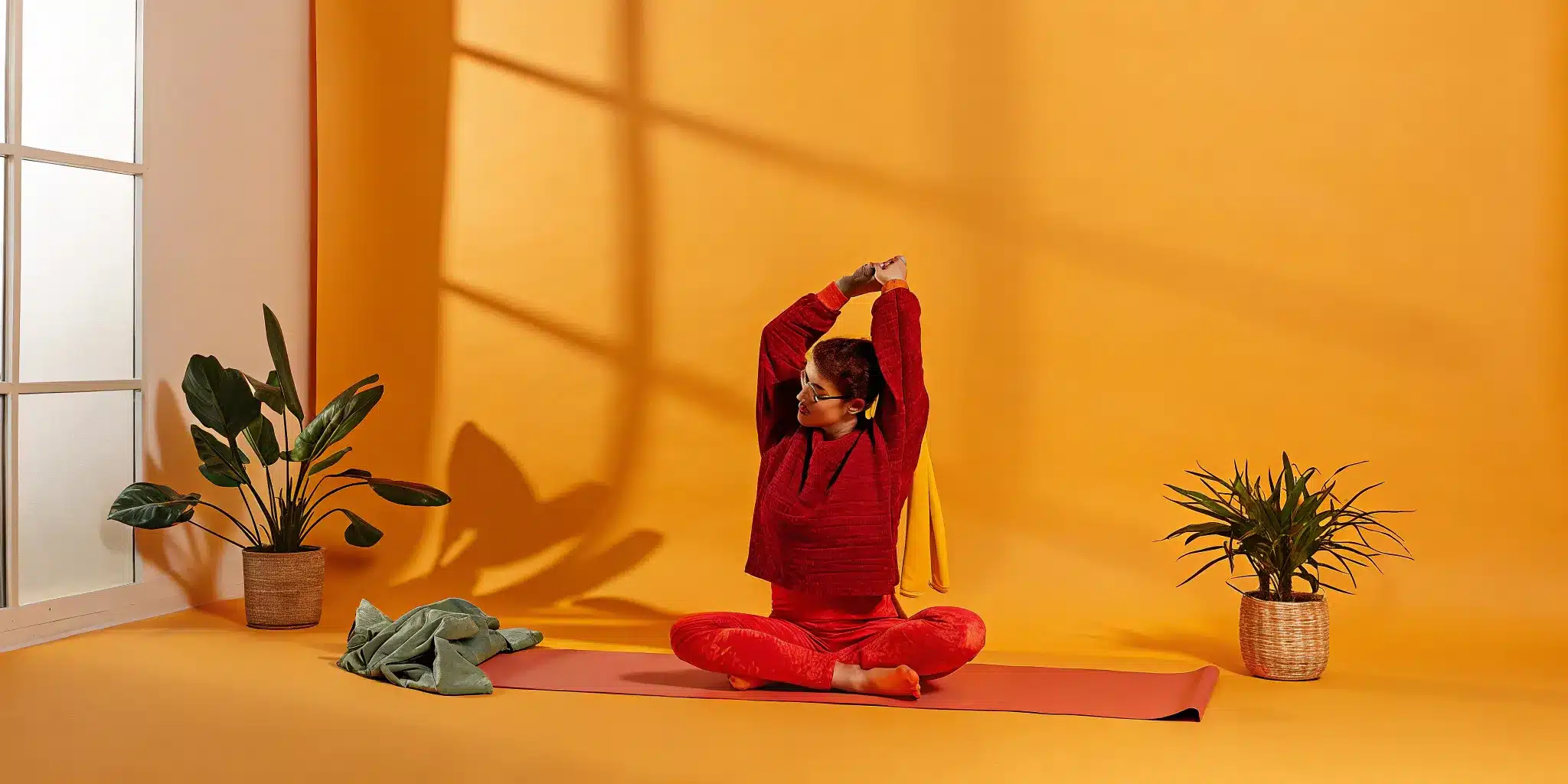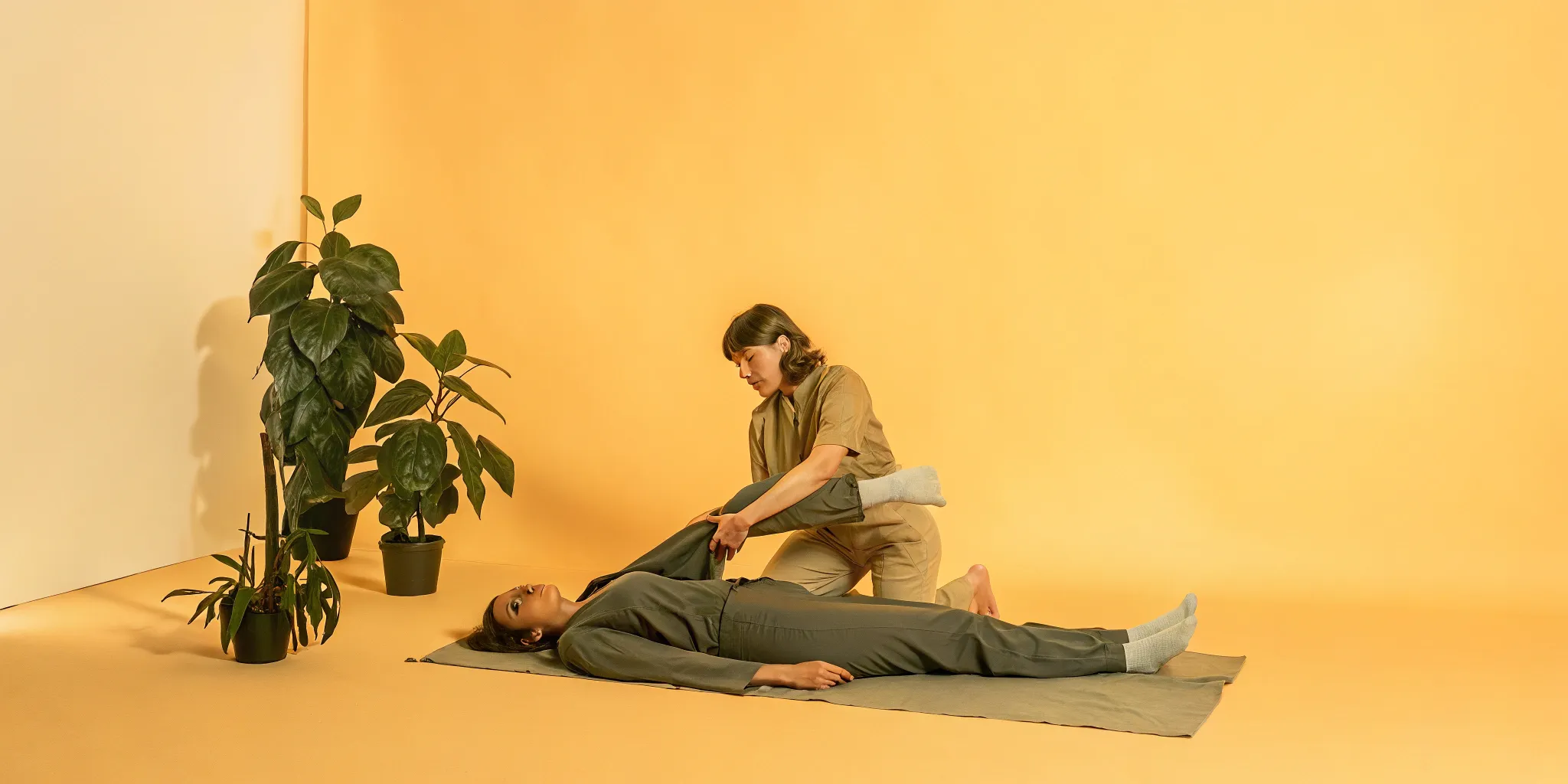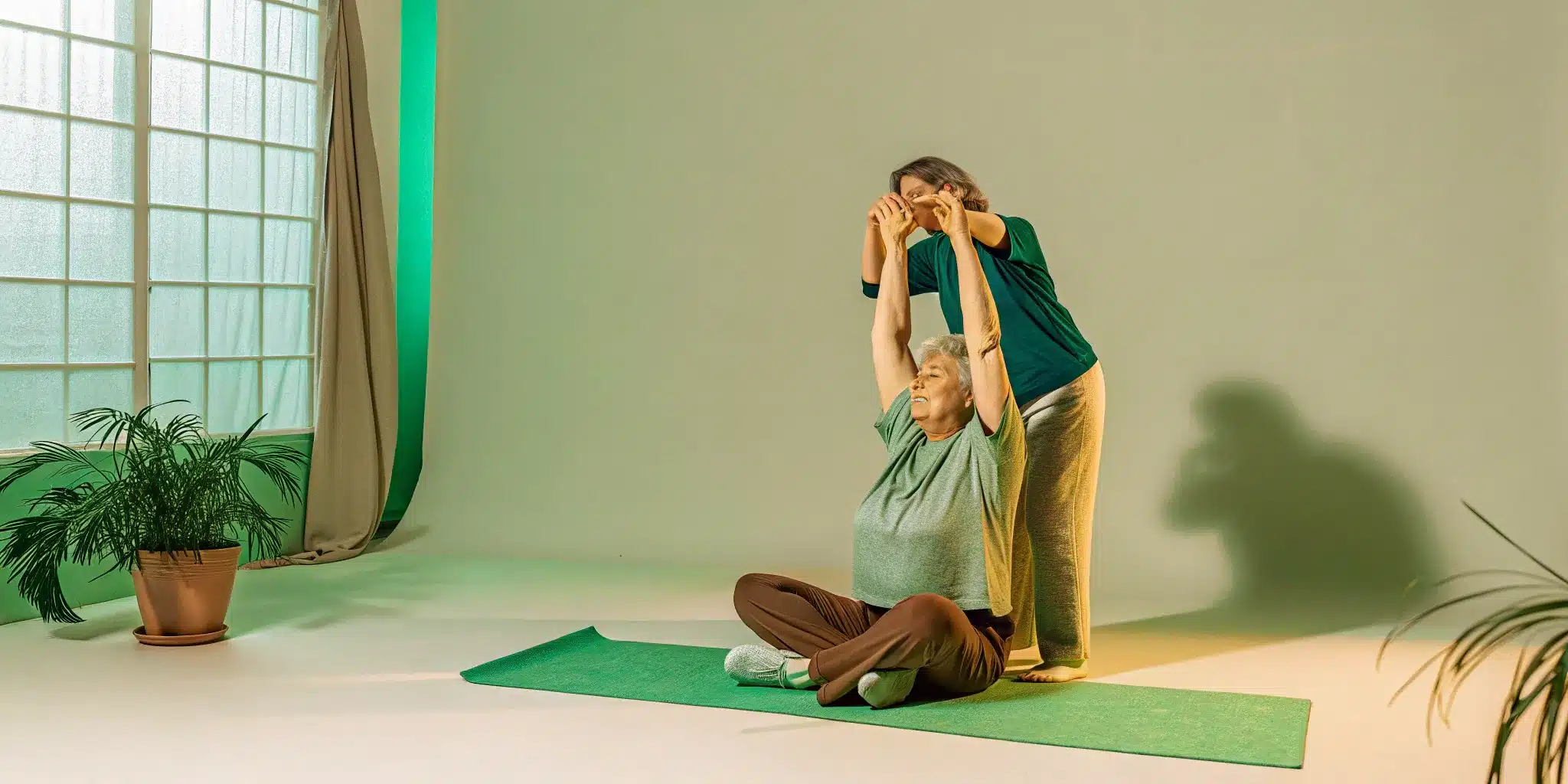If you’ve stretched, rolled, and massaged every tight muscle but still can’t find lasting relief, you’re not alone. Many of us focus entirely on our muscles, overlooking the real source of our stiffness and pain: the fascia. This web of connective tissue wraps around every part of your body, and when it gets tight, it restricts movement and creates discomfort that traditional stretching can’t touch. This is where fascia stretch therapy comes in. It’s a unique, assisted stretching method that goes beyond the muscles to target this intricate system. In this guide, we’ll break down what it is, how it works, and why it might be the missing piece in your journey toward feeling and moving better.
Key Takeaways
- Go beyond muscle stretching: FST is a hands-on therapy where a certified professional works with your body’s entire fascial network, not just isolated muscles, to provide deeper and more lasting pain relief.
- It’s for anyone who wants to move better: Whether you’re an athlete, a desk worker, or dealing with chronic pain, FST helps release the underlying restrictions that limit your mobility and cause discomfort.
- Be an active partner in your progress: The best results come from consistency and open communication with your therapist, combined with simple at-home care like staying hydrated and performing suggested mobility drills.
What is Fascia Stretch Therapy?
If you’ve tried traditional stretching without getting the lasting relief you need, you might be missing a key piece of the puzzle: your fascia. Fascia Stretch Therapy, or FST, is a unique, assisted stretching method that goes beyond your muscles to target this intricate system. It’s a different approach for anyone dealing with chronic tightness, pain, or limited mobility. Let’s break down what it is and how it works to help you feel and move better.
What is Fascia?
Think of fascia as a thin, strong, web-like suit you wear just under your skin. It’s a 3D web of connective tissue that wraps around and connects every single part of your body—your muscles, bones, nerves, and even your organs, holding everything in place. This network also contains nerves that communicate with your brain about how your body is moving. When your fascia is healthy, it’s flexible and glides smoothly. But when it gets tight from injury, inactivity, or stress, it can restrict movement and become a major source of pain and stiffness.
How Does FST Work?
FST isn’t about you forcing a stretch on your own. Instead, a certified therapist does the work for you in a gentle, pain-free way. The therapy focuses on your fascia and joint capsules to improve your range of motion and reduce discomfort. Your therapist will use a combination of flowing movements—like gentle pulling, rocking, and circular motions—to carefully release deep-seated tension. The goal is to unwind the tight fascia, calm your nervous system, and create more space in your joints, which can lead to significant pain relief and a feeling of freedom in your body.
FST vs. Traditional Stretching: What’s the Difference?
Think about the stretches you do after a workout, like holding a hamstring stretch for 30 seconds. That’s traditional, static stretching, which targets an isolated muscle. FST is completely different. It’s a dynamic, table-based therapy where you relax while your therapist guides your body through a sequence of stretches. They often use stabilization straps to hold one part of your body in place while moving another, allowing for better control and a more effective release of tension. This type of assisted stretching targets entire lines of fascia, not just one muscle, for a more holistic and lasting result.
What Happens During an FST Session?
If you’re picturing a typical stretching session where you hold uncomfortable poses, think again. Fascial Stretch Therapy is a completely different experience. It’s a pain-free, relaxing, and collaborative process between you and your therapist. You’ll be on a comfortable, padded table, and your only job is to breathe and relax while your therapist does the work. The session is designed to be gentle yet effective, targeting the fascia to release tension you might not even know you’re holding onto.
From the moment you lie down, the focus is on what your body needs. Your therapist will communicate with you throughout the session, ensuring the pressure and stretch are always within your comfort zone. It’s a dynamic process where your body is gently moved through flowing and fluid stretches, rather than being forced into a static position. This approach helps to calm your nervous system and allows for a much deeper and more effective release. Many people describe the feeling as a “comfortable stretch” that leaves them feeling both energized and deeply relaxed afterward. It’s a unique therapy because it works with your body, not against it, to create lasting change.
The Tools and Techniques
An FST session takes place on a specialized treatment table, similar to a massage table. To help you fully relax and to allow for a more effective stretch, your therapist will use padded straps to comfortably stabilize the parts of your body that aren’t being worked on. This isn’t restrictive; it’s actually liberating. These stabilization straps give your therapist the leverage they need to isolate specific muscles and fascial lines, ensuring you get the most benefit from every movement without having to engage your muscles to hold yourself in place. The techniques themselves involve gentle, oscillating movements that work with your breathing to ease your body into a deeper stretch.
Your Therapist’s Role
Think of your FST therapist as your partner in movement. They are a trained professional who understands the intricate web of your body’s fascial network. Their role is to expertly and intuitively guide your body through a series of stretches designed to release tension and improve mobility. They control the movement, gently tractioning and rotating your limbs and joints to undo tightness in the deepest layers of tissue. A certified therapist is trained to listen to your body’s subtle cues, never pushing past the point of resistance. This therapist-led approach ensures the entire session is safe, comfortable, and tailored specifically to your needs and limitations.
A Look at Your First Session
Your first FST session will start with a conversation. Your therapist will want to know about your goals, any chronic pain or injuries you have, and what you hope to achieve. Once you’re on the table, they will begin with a gentle assessment, moving your limbs to feel for restrictions and tightness. From there, they will guide you through a sequence of slow, rhythmic stretches. You’ll be surprised at how relaxing it feels. Unlike traditional stretching that can sometimes feel aggressive, FST is a pain-free therapy. You’ll leave your first session feeling lighter, looser, and more connected to your body.
Why Try Fascia Stretch Therapy?
If you’re looking for more than just a temporary fix, Fascia Stretch Therapy offers a host of benefits that address everything from nagging pain to athletic goals. Because FST targets the body’s connective tissue system, its effects are often felt throughout your entire body, not just in one tight muscle. It’s a proactive approach to wellness that can improve how you move, feel, and perform in your daily life. Whether you’re an athlete, a desk worker, or someone managing chronic discomfort, FST provides a path toward greater ease and function.
Find Relief from Chronic Pain
Living with chronic pain can feel like a constant battle against your own body. Fascia Stretch Therapy offers a gentle yet profound way to find relief. When fascia becomes tight and restricted, it can pull on muscles and joints, creating deep, persistent aches. FST works to release this underlying tension, allowing your muscles to finally relax. By freeing up these restrictions, the therapy helps reduce the strain that contributes to long-lasting pain, making everyday movements like walking, bending, and reaching feel smoother and more comfortable.
Improve Flexibility and Mobility
Do you feel like your body is holding you back? Tightness in your fascia can seriously limit your range of motion, making you feel stiff and inflexible. FST is incredibly effective at loosening this restrictive web of connective tissue. As the fascia is gently stretched and mobilized, your muscles and joints are able to move more freely. This isn’t just about touching your toes; it’s about restoring fluid, easy movement to your entire body. The result is a noticeable improvement in flexibility that you’ll feel whether you’re reaching for something on a high shelf or settling into a deep squat.
Enhance Your Athletic Performance
For athletes and active individuals, peak performance depends on a body that can move efficiently and without restriction. Fascia Stretch Therapy can be a game-changer for your training routine. By increasing flexibility and improving the way your muscles function, FST helps you get more power and precision out of every movement. It also plays a crucial role in injury prevention by addressing imbalances and tight spots before they become serious problems. Adding FST to your regimen is a smart way to support your athletic goals and keep your body working at its best.
Support Mind and Body Wellness
The connection between physical tension and mental stress is undeniable. FST helps bridge the gap, promoting a deep sense of relaxation that benefits both your mind and body. The gentle, pain-free movements of an FST session help calm your nervous system, signaling to your body that it’s safe to let go of stress. Many people report feeling not just physically looser but also mentally clearer and more focused after a session. This holistic approach contributes to a greater sense of calm and can even lead to increased energy levels as you shed accumulated tension.
Speed Up Recovery and Rehabilitation
Whether you’re recovering from a tough workout or rehabilitating an injury, getting back to feeling your best is the top priority. FST can significantly shorten your downtime by addressing the muscle stiffness and soreness that follow physical exertion. By improving circulation and releasing fascial restrictions around tired muscles, the therapy helps flush out metabolic waste and deliver fresh, oxygenated blood to the area. This process can accelerate recovery, reduce soreness, and help you bounce back faster, making it an excellent tool for anyone looking to maintain a consistent and active lifestyle.
Is Fascia Stretch Therapy Right for You?
Fascia Stretch Therapy isn’t a one-size-fits-all solution, but its benefits are surprisingly wide-ranging. Whether you’re a competitive athlete, someone dealing with persistent pain, or simply looking to move more freely in your daily life, FST offers a tailored approach to wellness. It addresses the body’s connective tissue system, which means it can help with a variety of goals, from performance and recovery to simple comfort and mobility. Let’s look at who stands to gain the most from this unique therapy.
For Athletes and Active People
If you love to move, FST can be a game-changer for your performance and recovery. By targeting the fascial lines that surround your muscles and joints, this therapy helps you achieve a deeper level of flexibility than traditional stretching. For athletes, this improved range of motion is key to performing at your best. Better yet, FST can play a crucial role in injury prevention by keeping your connective tissues healthy and resilient. When your body can move more freely, you’re less likely to strain a muscle or over-stress a joint. It also helps speed up recovery so you can get back to your training with less downtime.
For Those with Chronic Pain
Living with chronic pain can be exhausting, but FST offers a gentle yet effective path toward relief. Conditions like sciatica, arthritis, and fibromyalgia often involve tightness and inflammation in the body’s connective tissues. FST works by carefully releasing these tight tissues, which can reduce pressure on sensitive nerves and joints. This process also improves blood flow to affected areas, delivering much-needed oxygen and nutrients while flushing out inflammatory byproducts. For many, this can lead to a significant reduction in pain and a welcome increase in day-to-day mobility, helping you feel more at home in your own body again.
For Desk Workers and Sedentary Lifestyles
If you spend most of your day sitting at a desk, you’re probably all too familiar with the stiffness that creeps into your neck, shoulders, and back. A sedentary lifestyle can cause your fascia to become rigid and compressed, leading to poor posture and chronic tension. FST directly counters these effects by lengthening and decompressing the tissues that have become tight from prolonged sitting. The therapy promotes relaxation and helps realign your body, which can improve your posture and ease the constant strain on your upper body. It’s a fantastic way to undo the daily grind of desk work.
For Aiding Post-Surgery Recovery
Recovering from surgery is a journey, and FST can be an incredibly supportive tool along the way. After a procedure like a knee replacement or even a C-section, your body forms scar tissue as part of the natural healing process. While necessary, this tissue can sometimes restrict movement and cause stiffness. FST can help gently break down restrictive scar tissue and restore healthy function to the surrounding area. By improving flexibility and mobility in a safe, controlled manner, it helps you regain movement more comfortably and can be a valuable part of your overall rehabilitation plan.
For Healthy Aging
As we get older, maintaining our mobility, flexibility, and balance becomes more important than ever for staying active and independent. Fascia tends to get stiffer with age, which can contribute to that feeling of being less nimble than you used to be. FST is an excellent way to maintain and even improve your physical function as you age. By keeping your fascia pliable and your joints moving freely, it helps you stay balanced and confident on your feet. Regular sessions can enhance your overall flexibility, making it easier to enjoy all the activities you love, from gardening to playing with your grandkids.
What to Know Before You Go
Deciding to try a new therapy is a big step, and it’s smart to do a little homework first. Knowing what to expect and how to prepare can make all the difference in your experience. Here’s a straightforward guide to get you ready for your first Fascia Stretch Therapy session.
Important Health Considerations
First things first: FST is generally safe for most people, but its effectiveness and safety hinge on the person performing the stretch. It is absolutely essential that your session is with a certified FST therapist. They have the specialized training to understand the fascial lines of the body and work with them correctly. A great therapist will listen to your feedback throughout the session, adjusting the pressure and depth of the stretch to meet your body’s needs. The feeling should be one of a deep, releasing stretch—never sharp or painful. This open line of communication is crucial for a successful and beneficial session.
When FST Might Not Be the Right Fit
While FST is beneficial for many, it’s not a one-size-fits-all solution. If you’re dealing with a recent injury that involves swelling or inflammation, it’s best to wait. Stretching an acute injury can sometimes slow down the healing process. Additionally, FST may not be suitable for individuals with certain conditions that cause hypermobility, like Ehlers-Danlos syndrome, where joints are already too loose and could be overstretched. Always be upfront with your therapist about your complete health history, including any past surgeries or chronic conditions, so they can determine if FST is the right approach for you at this time.
How to Find a Qualified Therapist
Finding the right practitioner is key to a positive outcome. Your top priority should be to find someone who is certified in FST. This certification ensures they have completed the necessary training to perform the techniques safely and effectively. A qualified therapist will always start with a thorough assessment to understand your specific goals, pain points, and health history. At StretchMed, we take the guesswork out of it for you. Every one of our Stretch Therapists is certified and extensively trained to provide personalized, expert care, so you can feel confident you’re in good hands from the moment you walk in.
How to Prepare for Your Session
Preparing for your FST session is simple. Plan to wear comfortable, athletic-style clothing that you can move in easily—think yoga pants, joggers, or shorts, and a comfortable t-shirt or tank top. Your body needs to be able to move freely. It’s also a good idea to be well-hydrated before you arrive. Most importantly, come ready to communicate. Your therapist will rely on your feedback to guide the session. Remember, you are always in control. If a stretch feels too intense or causes discomfort, speak up immediately. A good session is a partnership between you and your therapist.
Get the Most Out of Your FST Sessions
Fascial Stretch Therapy is a partnership between you and your therapist. While your sessions are incredibly powerful, the actions you take between appointments play a huge role in your progress. Think of it like this: your therapist helps create new possibilities for movement, and your job is to explore and maintain that newfound freedom. By being an active participant in your wellness journey, you can extend the benefits of each session and achieve more sustainable, long-term results. It’s about creating a supportive routine that helps your body feel its best, both on and off the therapy table.
Set Realistic Goals
Lasting change doesn’t happen overnight, and the same is true for releasing years of fascial tension. While you’ll likely feel a difference after your first session, the most significant and durable results come from consistency. For the best outcomes, it’s often recommended to start with at least three FST sessions to help your body adapt and retrain its movement patterns. Be open with your therapist about what you want to achieve—whether it’s sitting through a workday without back pain or simply touching your toes. This helps them tailor each session to your specific needs and gives you a clear benchmark for success.
Decide on a Treatment Schedule
Once you’ve completed your initial sessions, you can work with your therapist to create a schedule that supports your lifestyle and goals. The right frequency is different for everyone. If you’re recovering from an injury or addressing chronic stiffness, you might need more frequent sessions at first. For general maintenance and well-being, many people find that monthly sessions are perfect for keeping their bodies feeling open and mobile. Your therapist can provide a personalized recommendation based on how your body responds and what you hope to accomplish long-term.
At-Home Care to Support Your Progress
The time you spend outside of the studio is just as important as the time you spend in it. Simple at-home care can make a world of difference in supporting your progress. Your therapist may suggest gentle stretches or mobility drills to practice between visits. Tools like foam rollers and trigger point balls can also help you work on tight spots and maintain the flexibility you’ve gained. Staying well-hydrated is also key, as healthy fascia is well-hydrated fascia. Drinking plenty of water helps keep your connective tissues pliable and responsive.
Complementary Wellness Practices
FST opens up your body’s potential, and other wellness activities can help you take full advantage of it. Gentle movement practices like yoga, Pilates, or even daily walks can reinforce the new patterns your body is learning. If you’re an athlete, you’ll find that FST can lead to faster recovery after workouts by improving blood flow and reducing inflammation. By integrating FST with your existing fitness routine, you can enhance your performance, reduce your risk of injury, and feel stronger and more resilient in all your activities.
Maintain Your Long-Term Results
The ultimate goal of FST is to help you live more comfortably and freely in your body every day. As you continue with your sessions and at-home care, you’ll notice that movement becomes easier and pain becomes less frequent. This isn’t just a physical shift; when your body can move freely without pain, it has a powerful positive effect on your emotional well-being, too. By viewing FST as an essential part of your ongoing self-care routine, you invest in a future with more mobility, less pain, and a deeper connection to your body.
Related Articles
- Benefits of a 1-on-1 Stretch Therapist: Improve Flexibility & Reduce Pain – STRETCHMED
- 10 Benefits of Stretching: Feel & Move Better – STRETCHMED
Frequently Asked Questions
Will Fascia Stretch Therapy hurt? Not at all. In fact, it’s designed to be completely pain-free and relaxing. Unlike some forms of deep stretching that can feel intense, FST works with your body, not against it. Your therapist will communicate with you constantly and will never push your body past its natural point of resistance. The goal is to create a feeling of a deep, comfortable release, not to force a stretch that causes you to tense up.
How is FST different from a deep tissue massage? While both therapies can help with tension, they work in very different ways. Think of a massage as focusing on pressing and kneading individual muscles to work out knots. FST is a more active and dynamic process. You are gently moved by the therapist through a series of flowing stretches that target entire lines of fascia, creating space in your joints and improving your overall mobility. It’s less about pressure and more about movement.
How often should I get FST? This really depends on your personal goals. If you’re working through chronic tightness or a specific issue, you might benefit from a few sessions scheduled closer together to start. This helps your body adapt to the changes. For general wellness and to maintain your flexibility, many people find that a session once a month is a perfect way to keep feeling loose and mobile. Your therapist will help you figure out a schedule that makes the most sense for you.
What should I wear to my session? You’ll want to wear something comfortable that you can move in easily, similar to what you might wear for a yoga class or a light workout. Think joggers, leggings, or athletic shorts paired with a comfortable t-shirt or tank top. The key is to avoid anything restrictive, like jeans, so your body has the freedom to move through the entire stretching sequence.
Do I have to be an athlete to benefit from FST? Absolutely not. While athletes use FST to improve performance and recovery, it’s incredibly beneficial for anyone who wants to move more freely and with less pain. If you spend your days sitting at a desk, struggle with chronic stiffness, or simply feel like your body isn’t as flexible as it used to be, FST can help restore your mobility and ease discomfort in your everyday life.








